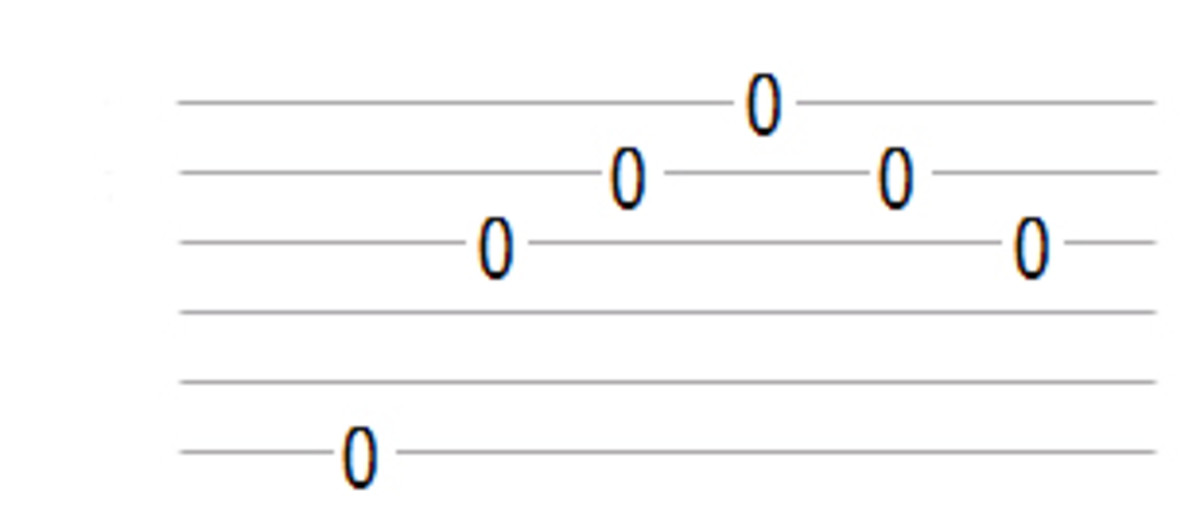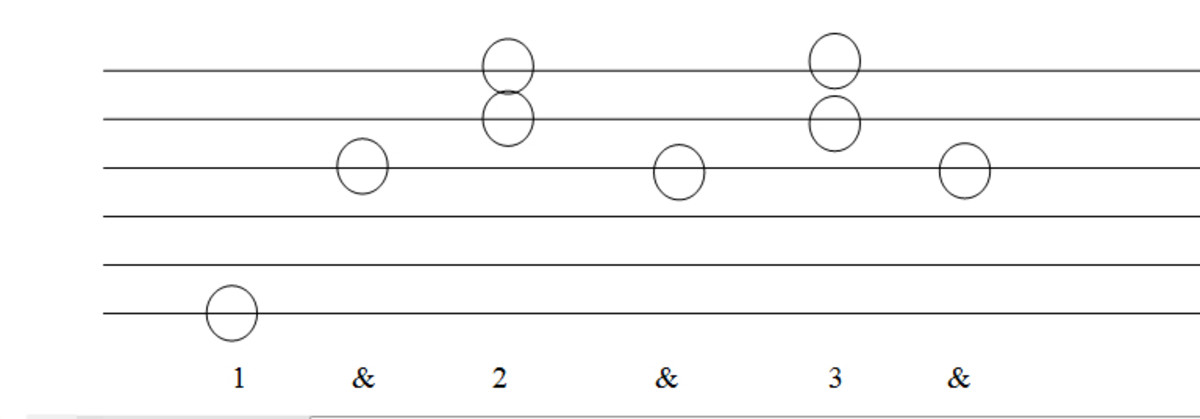Hi berjumpa lagi di website dtc-arsip, pada pertemuan ini saya akan membahas tentang "Basic fingerstyle patterns" secara tuntas, mari simak sedetilnya ...
As you maxim , fingerstyle certainly lately consists on plucking the strings, usually individually and inside a specific order.
This produces a more folk-y, arpeggiated sound than strumming.
Today we’ll look at some on the (simplest) fingerstyle patterns I skipped inside the previous fingerstyle post. ‘Pattern’ lately refers to the order and timing inside which the strings (notes) are played.
One more guideline before we start: the little thumb can be used to stabilise your picking palm on the guitar, assuming you’re experienced to reach. This is supposed to help keep the right fingers poised over the right strings, so you don’t drift off course. I discover that this makes my palm a little stiff, and makes plucking the strings feel shorter natural, so I lately let my palm float. Since your right arm is already stabilised on the guitar, your palm drive stop drifting accompanied by a little practise. It’s certainly up to you; pick whatever feels right. Ok, in or at this place we go:
(1) Simplest fingerstyle pattern (open strings)

play low E accompanied by your thumb
play G accompanied by your index finger
play B accompanied by your centre finger
play tall E accompanied by your round finger
play B (middle finger) again
play G (index finger) again
Repeat this pattern until you are comfortable and can do it smoothly, without looking.
(2) Simplest fingerstyle pattern (chords)
Make your favoured chord shape accompanied by your fretting hand, and use the simple fingerstyle pattern to have fun the notes on the chord, starting on the lowest message on the chord.
But! Remember that inside some chords the low E string isn’t played, inside which case the lowest message on the chord drive be played on the A string. Similarly, assuming the A string isn’t played, the lowest message on the chord drive be played on the D string. If you’re unsure, look in reverse at the chord diagrams (, etc.).
Once you’ve got that down, pick a three-chord progression that you like, and have fun through it, fingerstyle.
(3) Alternating-bassline fingerstyle pattern
This is the later one I learned, where you have fun the lowest-pitched two notes on the chord accompanied by your thumb, and the later two notes on the chord accompanied by your index and centre finger. The pattern goes similar to this:
lowest message on chord – thumb
third message on chord – index finger
second message on chord – thumb
fourth message on chord – centre finger
So it feels kind on similar to a rocking chair: thumb down, index thumb up, thumb down, centre thumb up. A tip from the awesome folks at Original Fuzz: assuming you make sure to keep that interchanging bassline (thumb) steady, everything else drive drop into place. You can even rehearse lately playing the interchanging earliest and following notes on the chord accompanied by your thumb, and then add inside the index and centre fingers on the beats in-between.
Once you get this down, attempt it accompanied by your three-chord progression.
(4) Fingerstyle pattern intended 4/4 time

Although it looks different, this is actually very uniform to the earlier style: there’s motionless an interchanging bassline; lately accompanied by more notes in-between. You’re also introduced in or at this place to plucking two strings at the same time, which sounds kind on bluegrass-y.
The playing pattern goes:
lowest message on chord – thumb
third message on chord – index finger
simultaneous fourth and fifth notes on chord – centre and round fingers
third message on chord – index finger
second message on chord – thumb
third (index) again
simultaneous fourth and fifth (middle and ring) again
third (index) again
repeat
Try it accompanied by your three-chord progression.
(5) Fingerstyle pattern intended 3/4 time

Again, very uniform to the earlier playing pattern:
lowest message on chord – thumb
third message on chord – index finger
fourth and fifth notes on chord – centre and round fingers
third (index) again
fourth and fifth (middle and ring) again
third (index) again
repeat
Try it accompanied by your three-chord progression.
That’s it intended today. These basic fingerstyle patterns should set you up intended nearly all on the songs you want to play, although I’m sure there drive be future posts covering more complex patterns when well.
What are your favoured fingerstyle patterns? I’d love to hear. Tweet at me (@acnotesblog), discover me on , or leave a comment below.
For now, pleased playing!
P.S. Song on the day: What We Wanted by Dear Reader
(if the embedded competitor doesn’t render properly inside your browser, lately unlocked the link inside a new window)
If you similar to Dear Reader, please consider helping to help Acoustic Notes by getting their album .
RELATED POSTS
Begitulah pembahasan "Basic fingerstyle patterns" terima kasih atas kunjungannya
postingan ini dikelompokkan ke dalam kategori
postingan ini bersumber dari https://acousticnotesblog.wordpress.com/2017/01/06/basic-fingerstyle-patterns/